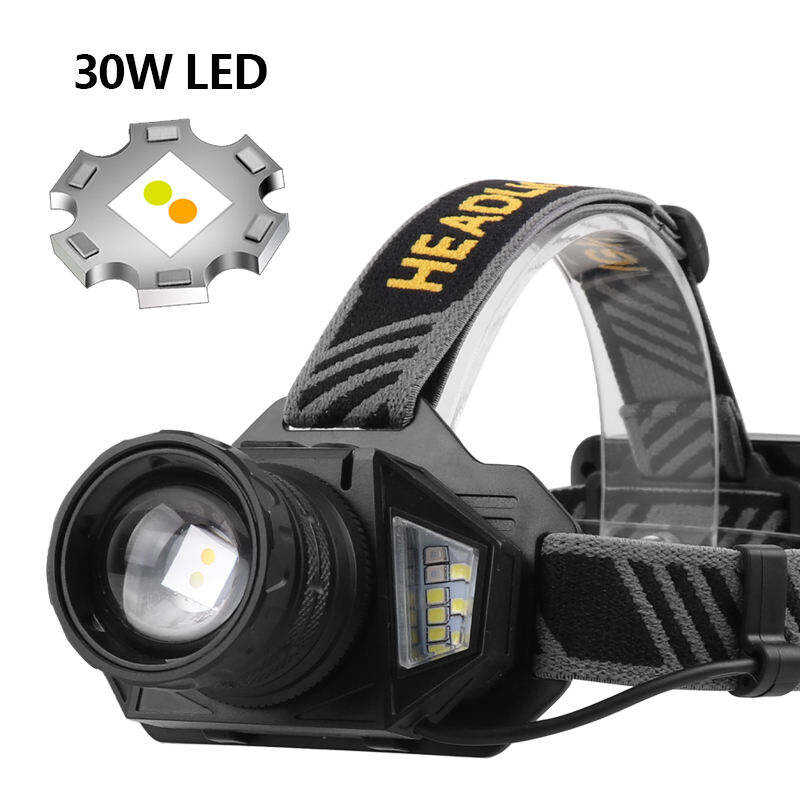How to Ensure Your Headlamp Is Reliable and Durable
A reliable Headlamp is essential for outdoor adventures, emergency situations, and professional work environments where hands-free lighting is required. Choosing a high-quality Headlamp ensures consistent illumination, long service life, and safety during critical tasks. Understanding the factors that contribute to durability and performance is key for anyone investing in a dependable lighting solution.
Yiwu Torch Electronic Company Limited, established in 2015 and located in Yiwu City, Zhejiang Province, is a trusted supplier of indoor and outdoor emergency lighting products. With advanced production equipment and skilled front-line employees, Yiwu Torch specializes in the research, development, sale, and service of LED Flashlights, LED Headlamps, Camping Lights, Working Lights, Solar Garden/Grass Lights, Wall Lights, and various Massagers.
Understanding Headlamps
What is a Headlamp?
A Headlamp is a portable lighting device worn on the head, allowing hands-free illumination for tasks in dark or low-light conditions. It is widely used in outdoor activities, professional work, and emergency scenarios.
Importance of Reliability
A reliable Headlamp provides consistent brightness, long battery life, and durability in various environmental conditions. Dependable performance reduces the risk of accidents, especially in outdoor or industrial settings.
Key Features of a Durable Headlamp
High-quality Headlamps incorporate features such as robust housing, water resistance, adjustable straps, long-lasting LEDs, and efficient power sources. These elements ensure the lamp performs reliably under various conditions.
Materials and Construction
Housing Materials
Durable Headlamps are constructed with high-strength plastics, aluminum, or composite materials. These materials resist impact, corrosion, and wear, providing long-term durability.
Lens and Optics
Quality Headlamps use scratch-resistant lenses and precise reflectors or lenses to deliver focused, uniform illumination without distortion.
Straps and Mounts
Adjustable, comfortable straps with reinforced attachments ensure a secure fit and prevent damage to the Headlamp during rigorous activity.
Power and Battery Considerations
Battery Types
Headlamps can use disposable batteries, rechargeable batteries, or integrated lithium-ion power packs. Choosing the right battery type affects runtime, weight, and reliability.
Runtime and Efficiency
High-performance Headlamps provide extended battery life, with efficient LED technology minimizing energy consumption while maintaining brightness.
Battery Protection Features
Modern Headlamps include features such as overcharge protection, low-voltage warning, and safe battery compartment design to extend battery lifespan and ensure user safety.
Performance and Usability
Brightness and Beam Options
Reliable Headlamps offer multiple brightness levels and beam patterns, allowing users to adjust light output according to tasks and environments.
Water and Dust Resistance
High-quality Headlamps are often rated IPX4 to IPX8, providing protection against water splashes, heavy rain, or dust intrusion, ensuring durability in outdoor conditions.
Adjustable Angles
Tiltable lamp heads allow users to direct light where needed, improving visibility, efficiency, and safety.

Maintenance and Care
Regular Cleaning
Clean lenses, housing, and straps regularly to prevent dirt buildup and ensure consistent light output.
Storage Practices
Store Headlamps in a cool, dry place and remove batteries if the device will not be used for extended periods to prevent leakage and damage.
Inspection and Replacement
Check for worn straps, loose connections, or dim LEDs, and replace components as needed to maintain optimal performance.
Advantages of High-Quality Headlamps
Long-Term Reliability
Investing in a high-quality Headlamp reduces the need for frequent replacements and ensures dependable performance during critical tasks.
Enhanced Safety
A reliable Headlamp provides consistent illumination, minimizing the risk of accidents in low-light conditions.
Comfort and Ergonomics
Well-designed Headlamps distribute weight evenly, reducing fatigue during prolonged use.
Versatility
High-quality Headlamps are suitable for outdoor adventures, professional work, and emergency preparedness, offering multiple features and adaptable performance.
How Yiwu Torch Electronic Company Limited Supports Customers
Industry Experience
Yiwu Torch leverages years of experience in lighting technology and manufacturing to deliver durable, high-performance Headlamps.
Advanced Manufacturing
With state-of-the-art equipment and skilled personnel, the company ensures precise production, stringent quality control, and reliable product performance.
Global Quality Compliance
Yiwu Torch products adhere to international standards for safety and quality, providing confidence for both retail and professional markets.
Technical Support and Consultation
The company offers guidance on product selection, usage, and maintenance, ensuring customers achieve maximum performance and reliability.
FAQ
What should I look for in a durable Headlamp
Consider materials, battery type, brightness levels, water resistance, comfort, and additional features such as adjustable angles and beam patterns.
How can I extend the lifespan of my Headlamp
Regular cleaning, proper storage, periodic inspection, and battery care are essential to maintaining durability and performance.
Are LED Headlamps more reliable than traditional bulbs
Yes, LEDs provide longer lifespan, lower energy consumption, and more consistent illumination compared to incandescent or halogen bulbs.
Can Yiwu Torch Headlamps be used outdoors in extreme conditions
Yes, Yiwu Torch Headlamps are designed with high-quality materials, IP-rated water/dust resistance, and robust construction for reliable performance in demanding environments.
Table of Contents
- How to Ensure Your Headlamp Is Reliable and Durable
- Understanding Headlamps
- Materials and Construction
- Power and Battery Considerations
- Performance and Usability
- Maintenance and Care
- Advantages of High-Quality Headlamps
- How Yiwu Torch Electronic Company Limited Supports Customers
- FAQ
-
What should I look for in a durable Headlamp
- Consider materials, battery type, brightness levels, water resistance, comfort, and additional features such as adjustable angles and beam patterns.
- How can I extend the lifespan of my Headlamp
- Are LED Headlamps more reliable than traditional bulbs
- Yes, LEDs provide longer lifespan, lower energy consumption, and more consistent illumination compared to incandescent or halogen bulbs.
- Can Yiwu Torch Headlamps be used outdoors in extreme conditions
- Yes, Yiwu Torch Headlamps are designed with high-quality materials, IP-rated water/dust resistance, and robust construction for reliable performance in demanding environments.

